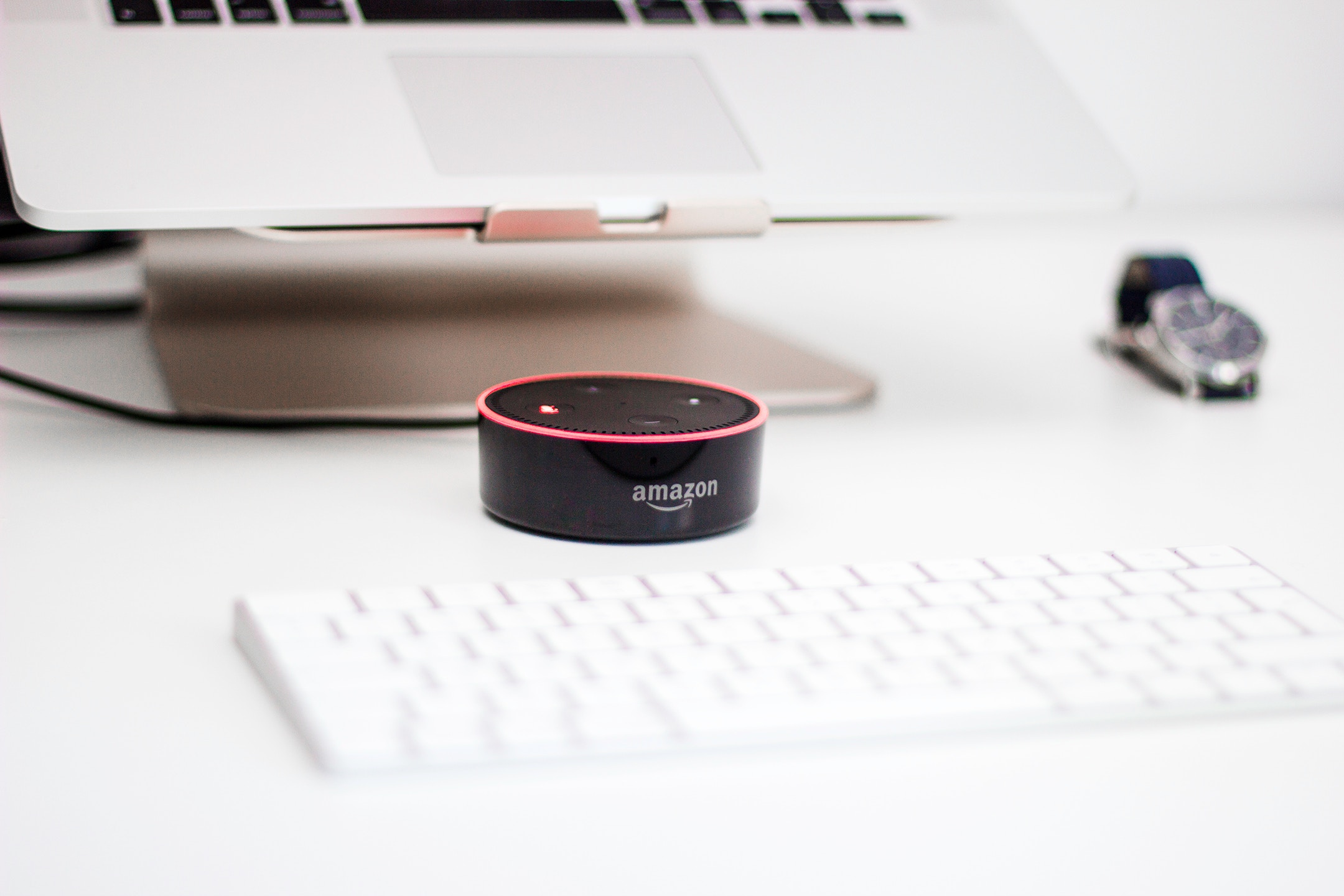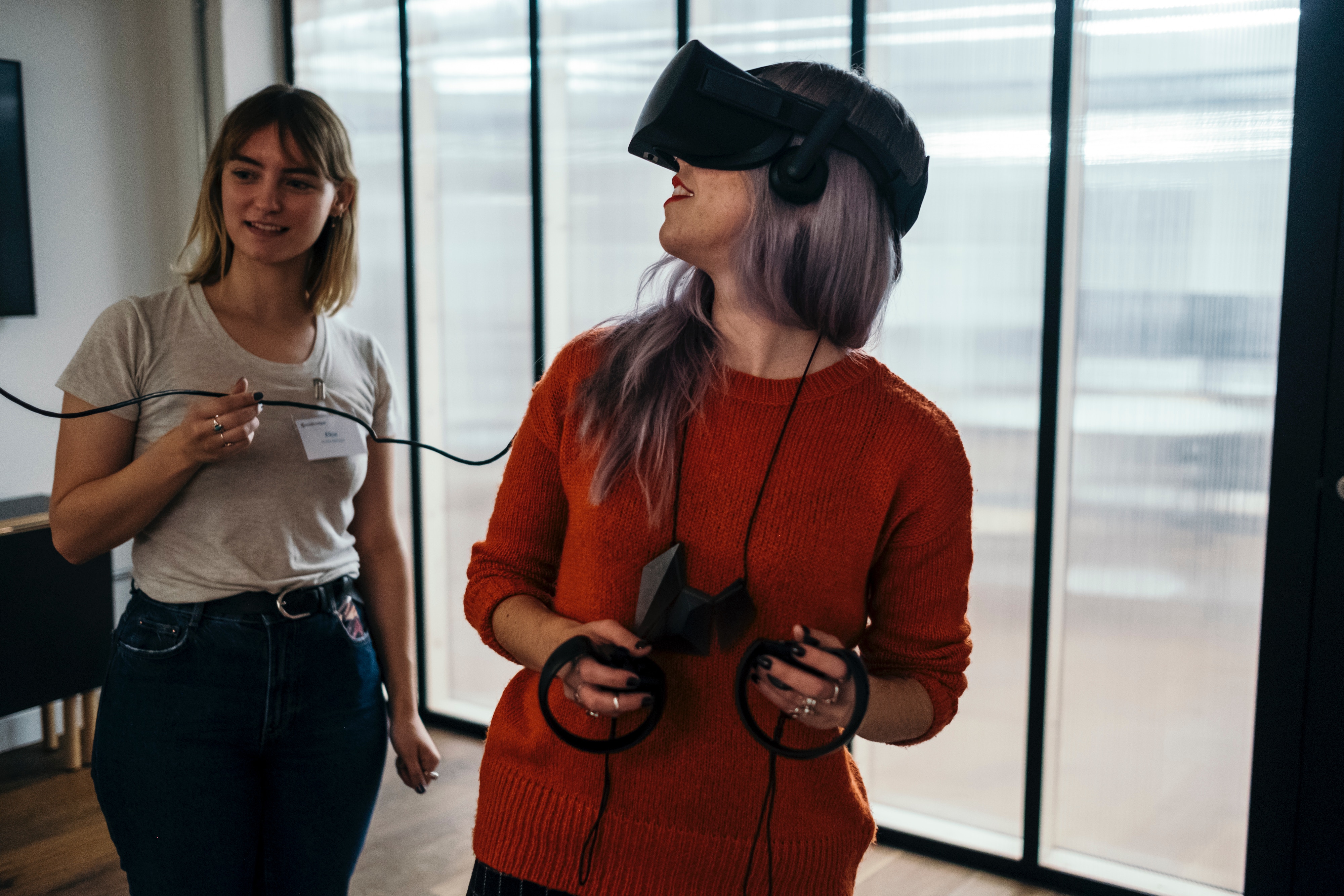Over the past year, we’ve covered a huge range of topics on our blog – from Bitcoin’s user experience issues to chatbots to how human-centred design could change politics. But what will we be talking about in 2018?
We decided to bash our Bunnyfoot heads together to predict what we think will be the key trends to be aware of over the next year when it comes to implementing a user experience – and how to make them a success.
The Possibilities of Voice UI Will Continue to Expand
Despite some initial misalignments between consumer expectations (that these products are conversational tools) and the reality (they’re more of an ‘ask a simple question, get a simple answer’ tool) of products such as Google Home and Amazon Echo (also referred to as Alexa), hopes are still high for Voice User Interfaces (VUI).
We can see why this is the case; the potential is definitely there – these are products that can impact users’ day-to-day lives in a positive way – and with some thorough research (looking at the household conversations that lead up to interactions with the device, whether people ask follow-up questions, what type of questions they ask, and in what situations the device currently makes errors) this potential could start to be realised.

And we’re not the only ones who think so: WeWork is integrating Alexa for Business into their work spaces to make office life that little bit simpler – for example, you could ask Alexa to extend your meeting room booking, or dim the lights after everyone’s done for the day – and hotel giant Wynn has installed over 1,000 Amazon Echos in their Las Vegas branch, meaning ordering room service will be easier than ever before.
Voice UIs like Amazon Echo and Google Home are constantly collecting data, and through machine learning will improve over time – hopefully making the user’s interactions with them feel more natural and engaging. It’ll be interesting to see just how substantial the changes to VUI technology are in 2018 – especially with Apple due to throw their own hat (the HomePod) into the ring later this year. We’ll be doing a deeper dive into voice controlled user interfaces soon – so keep your eyes open!
Augmented and Virtual: The Realities of 2018
It’s almost a cliché to refer to augmented (AR) and virtual reality (VR) as “trends” at this point. With huge investments from Google and Facebook (amongst others), it doesn’t look likely that advancements in AR and VR technology will be slowing down any time soon.
VR and AR allow for a hugely immersive experience for the user, engaging their sight and sound senses completely (though touch, taste and smell still have some way to go), however there are some key things to bear in mind to make the experiences you create in 2018 even more immersive. For example, the experience must be believable; yours may be set on a spaceship in 2055, but if you’re asking users to push a button to advance, make the action as simple as it is here in the present – if you ask them to re-learn their established mental model, it will be jarring, and take them out of the experience entirely. It’s in the name: Virtual Reality.
Another thing to bear in mind is that, for users who may not be completely familiar with the technology, virtual and augmented reality experiences can be quite daunting. The experience should have a clear set of steps that the user can complete to reach their desired goal (whether this is in a gaming environment or as a service), which should make sense within the established ‘universe’ of the experience. Easily accessible menus can also be a great way to make the experience easier to navigate – including heading back to ‘Home’ when they’ve finished!

User testing is a vital part of VR and AR, even though it’s one of the more challenging technologies to test – you can’t watch the user and experience the same thing they do, unlike with website or mobile app testing – so make sure you create a testing environment that reflects the experience the user is having as much as possible (example: if they’re meant to be sitting at a desk in the virtual world, put one in physically front of them).
Throughout 2018, it’s likely that even more organisations will jump on the VR and AR bandwagon (again, Apple are rumoured to be making a play here) and try to include virtual or augmented reality experiences as part of their offering – and with more market penetration and competition, it will be increasingly important to get them right.
Emotional Design Makes an Impact
From virtual reality to an equally un-tangible reality: human emotions. People often speak quite coldly of the sites and services they interact with; the products that elicit an emotional reaction are few and far between. But it doesn’t have to be this way.
Designing with human emotions in mind isn’t a new concept – here at Bunnyfoot, it’s something we’re very cognisant of – but it is an important one, not least because an emotional connection can ensure customers don’t just use your service once – it’s a longer-term strategy. So, how can you achieve an emotional connection with your customers through design?
Ultimately, as much as we think of ourselves as rational decision makers, our decisions are often made sub-consciously, on the basis of a gut reaction. Ensuring the design of your product or service evokes positive emotional reactions can be done in a multitude of ways – but first you need to think about what you want them to feel. Reassured? Empathetic? Happy?
If you want your users to feel ‘happy’, try using light, bright colours in your designs. If you want to reassure them, use font styles that have a ‘sturdy’ (not too thin, but not too spacy) feel and a no-frills-attached user journey. Want them to empathise with your cause? Use relevant, emotive images to add an emotional pull to your message (you just need to look to the adverts on the tube for various charities for examples of this done perfectly!).

But bear in mind that your service, product or website doesn’t have to elicit only one emotion – you may want your users to feel different things at different touch points. This should be done by carefully mapping out the user journey when testing, and working out which stages are the most effective to enhance or shape what your customers feel.
Of the organisations that thrive next year, it’s likely that many will be those who manage to establish an emotional connection with their customers – from the first touch point to the last.
The Digital Duopoly
Creating a truly cutting-edge user experience can’t be done in a vacuum; you need to have an awareness of what other organisations are doing around you, and the knock-on effect this could potentially have on what consumers grow to expect from the products and services they use.
The ‘digital duopoly’ of Google and Facebook continued their hold on digital media in 2017 – combined, they received 84% of all money spent, according to GroupM. However, despite their ubiquity, the majority of your users are likely to be unaware of just how much of a stronghold these companies have – and will continue to trust them. When mapping out a brand strategy, it’s always worth knowing where your customers go to get their information and what sources they trust, and consider including them as potential touch points in your customer journey.
Are there any trends or tools that didn’t make our list? Let us know in the comments!
Make 2018 the Year of UX by taking one of our courses, run by our team of experts:
- UX Strategy
- Designing for Emotion
- Customer / User Research Methods and Practice





